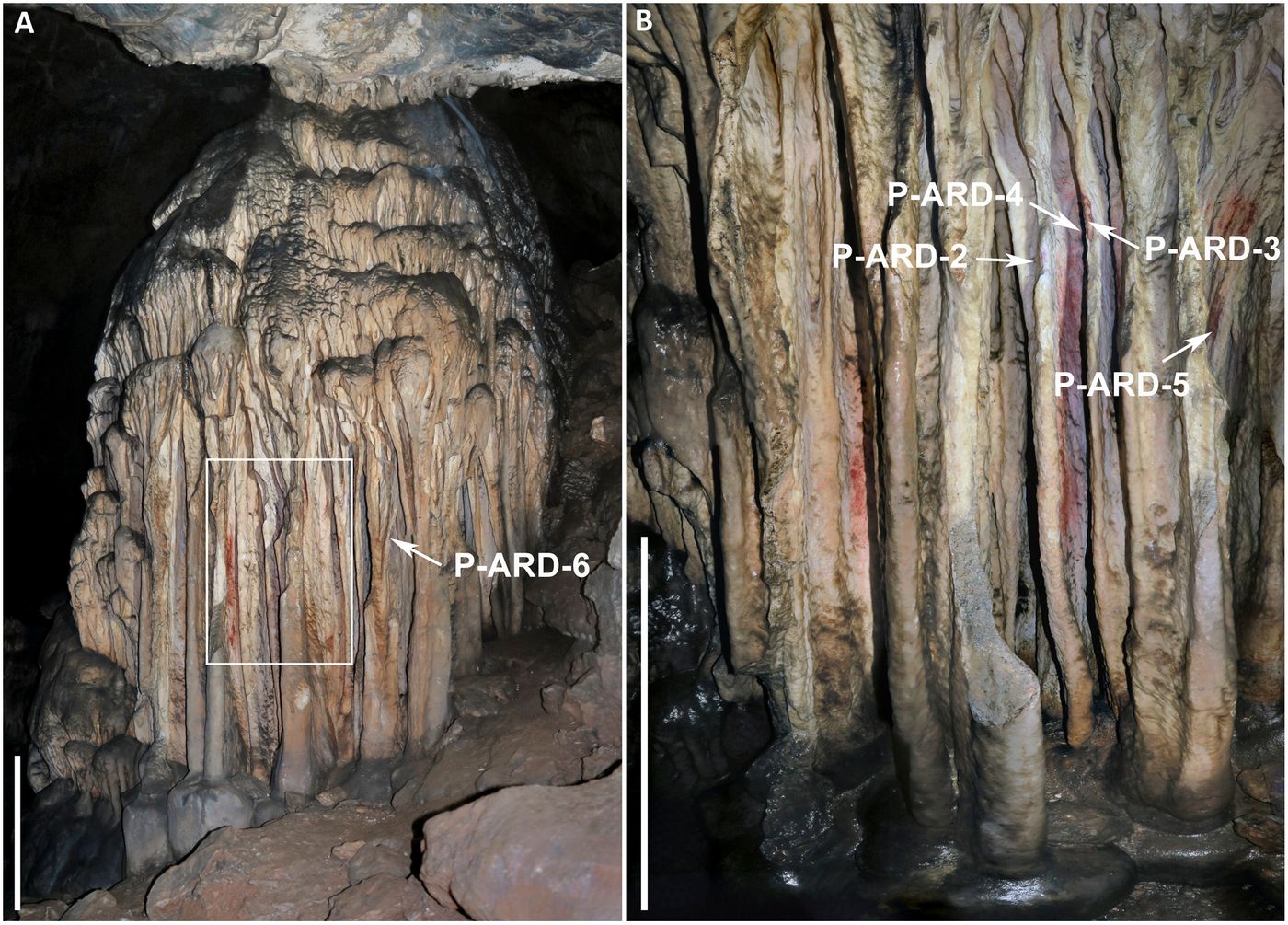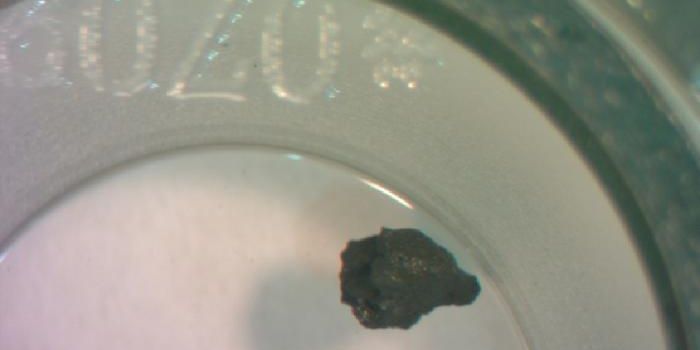New Evidence Expands Hypothesis About Neanderthal Paintings
In a 2021 study published in PNAS, an international team of researchers suggest that cave paintings found in Cueva de Ardales, Spain were made by Neanderthals more than 60,000 years ago. The researchers hailed from Spain, Portugal, France, Norway, and Germany, and this study opens the door for discussing the presence of Neanderthals on the European continent more than 20,000 years before modern humans showed up.
This present study came about after a 2018 study caused turmoil within the paleoarchaeology community discussed how red ocher pigment found within these caves were attributed to our extinct “cousin” species, with the suggested dating of the paintings to be at least 64,800 years old.
Sample sites within the Cueva de Ardales caves in Málaga, Spain. P-ARD-6 indicates the large sample region, which is enlarged in B and offers a close-up of additonal sample sites. Scale bars, 50 cm. (Credit: Pitarch Martí et al. (2021) The symbolic role of the underground world among Middle Paleolithic Neanderthals. PNAS. Vol. 118, No. 33 e2021495118)
However, these findings were so controversial that “a scientific article said perhaps these pigments were a natural thing,” a result of iron oxide flow, said Dr. Francesco d’Errico of the University of Bordeaux, a co-author of the most recent study, to Agence France-Presse.
This most recent study disclosed that both the placement and composition of the pigments emplaced through blowing and scattering, as opposed to natural processes. They also note the texture of the originated from an external source when compared with natural samples that were removed from the caves.
“Close-up view of red stains (A–E), microphotographs (F–J), and selected SEM images in backscattered electron mode (K–O) of red microsamples extracted from panel II.A.3. (A) Curtain 9, (B and C) Curtain 8, (D) Curtain 6, (E) Curtain 5, (F and K) P-ARD-02, (G and L) P-ARD-03, (H and M) P-ARD-04, (I and N) P-ARD-05, and (J and O) P-ARD-06. Arrows in A–E indicate the extraction spot. Scale bars in A–E, 1 cm.” (Credit: Pitarch Martí et al. (2021) The symbolic role of the underground world among Middle Paleolithic Neanderthals. PNAS. Vol. 118, No. 33 e2021495118)
After applying more detailed dating, it was also found some of the pigments were separated by more than 10,000 years, indicating some of the pigments were applied at individual points in history.
These findings “support the hypothesis that the Neanderthals came on several occasions, over several thousand years, to mark the cave with pigments, said d’Errico.
The findings in this new study add to increasing evidence that Neanderthals, who are believed to have completely gone extinct 40,000 years ago, were not the coarse and ill-bred relatives of Homo sapiens they have long been portrayed as being.
As always, keep doing science & keep looking up!
Featured Image: Sanple sites within the Cueva de Ardales caves in Málaga, Spain. P-ARD-6 indicates the large sample region, which is enlarged in B and offers a close-up of additonal sample sites. Scale bars, 50 cm. (Credit: Pitarch Martí et al. (2021) The symbolic role of the underground world among Middle Paleolithic Neanderthals. PNAS. Vol. 118, No. 33 e2021495118)










